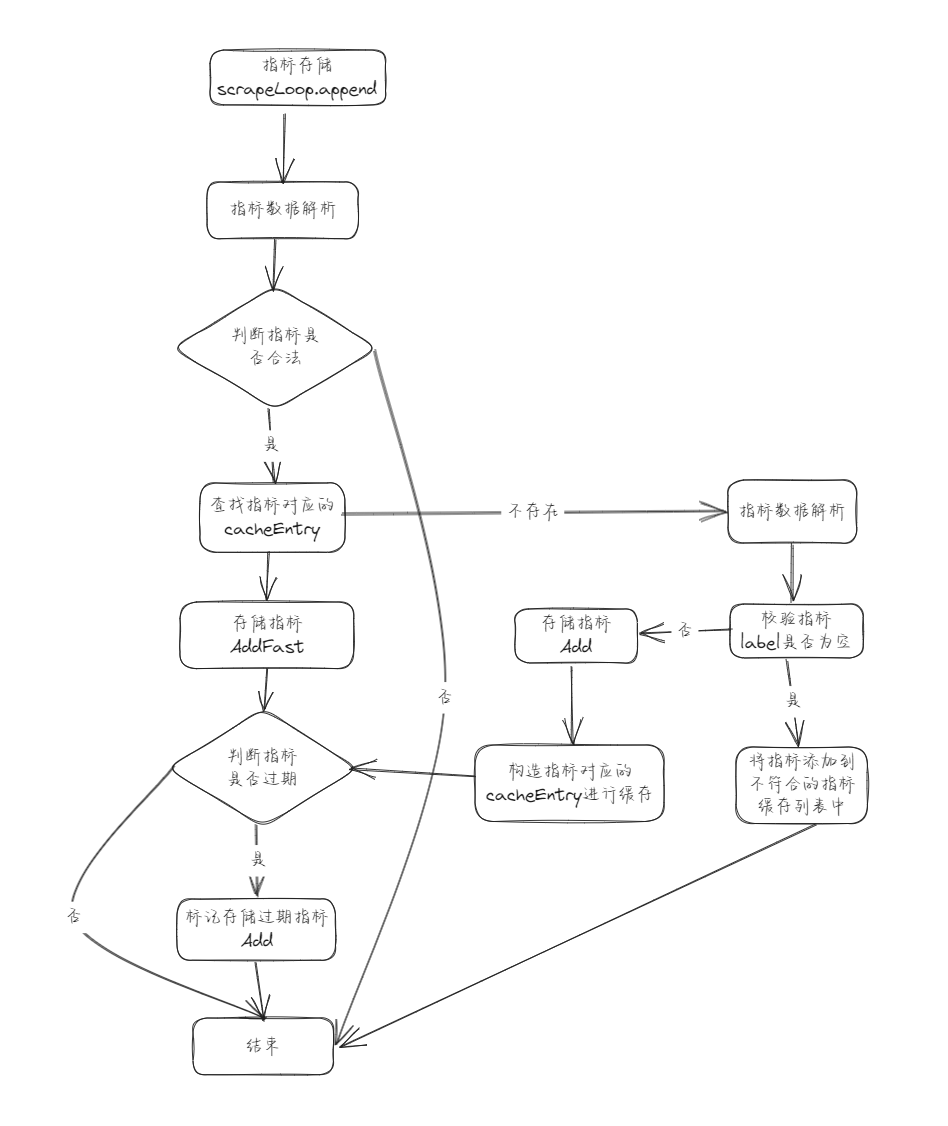Prometheus源码:存储指标
Prometheus源码:存储指标
基于release-3.0
存储指标结构
1 | // File Path: scrape/scrape |
核心方法:
func (c *scrapeCache) iterDone(flushCache bool): 用于scrapeCache缓存整理func (c *scrapeCache) get(met []byte) (*cacheEntry, bool, bool):根据指标信息met,活去cacheEntry结构func (c *scrapeCache) addRef(met []byte, ref storage.SeriesRef, lset labels.Labels, hash uint64):根据指标信息增加cacheEntry节点func (c *scrapeCache) addDropped(met []byte):添加无效指标信息到dropped列表func (c *scrapeCache) getDropped(met []byte) bool:判断met是否为无效指标func (c *scrapeCache) trackStaleness(hash uint64, lset labels.Labels):添加不带时间戳的指标到seriesCur列表func (c *scrapeCache) forEachStale(f func(labels.Labels) bool):查找过期指标
流程

- 在scrapeLoop.append中,先获取到指标存储器(app)和指标解析器(p),从p中循环活去指标met并通过sl.cache.getDropped方法判断met是否是不合法指标,如果不合法指标就丢弃,然后根据met在sl.cache.get(entries)中查找cacheEntry
- 如果查找到对应的cacheEntry,就调用app.AddFast方法进行指标存储
- 如果没有查找到对应的 cacheEntry,就调用 app.Add 方法进行 指标存储
- 在进行指标存储操作前,会根据在 prometheus.yml 中配 置的 HonorLabels、MetricRelabelConfigs 规则,对指标的 label 进行重置,然后对指标的合法性进行校验,校验方式为判断指标的 label是否为空。如果校验结果不合法,就将 met添加到scrapeCache 的dropped列表中,以供下一次指标存储前匹配校验,最后将指标通过 sl.cache.addRef 方 法 缓 存 到 scrapeCache 的 entries 列 表 。
- sl.cache.addRef方法主要用于将指标信息构造为cacheEntry结构。 被存储的指标还分为自带时间戳与不带时间戳两种。自带时间戳 的指标的存储按照上述流程处理。而不带时间戳的指标的存储,则将 系 统 的 当 前 时 间 作 为 指 标 的 时 间 , 并 且 会 将 指 标 通 过 sl.cache.trackStaleness方法缓存到scrapeCache的seriesCur列表 中。 对过期指标的处理通过调用 sl.cache.forEachStale方法完成。
- 在 forEachStale方法中先遍历 scrapeCache 结构中的 seriesPrev, 并判断 seriesPrev 中的指标是否存在于seriesCur中,如果不存在, 就表示该指标为过期指标,并将过期指标的值设置为StaleNaN 后进行 存储,如果存在就不做处理。在 seriesPrev 中缓存了上次存储的指 标中不带时间戳的指标
本博客所有文章除特别声明外,均采用 CC BY-NC-SA 4.0 许可协议。转载请注明来源 Joohwan!
评论



